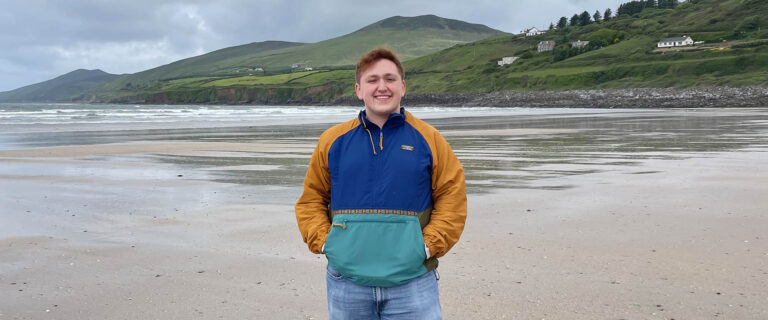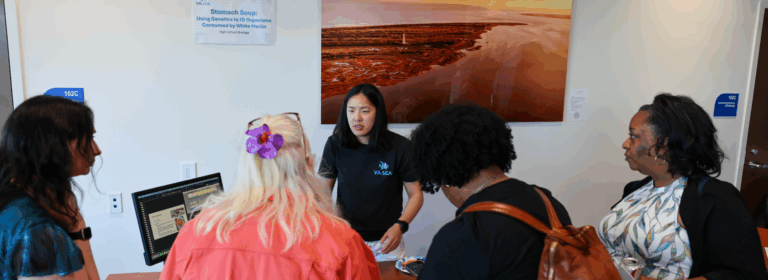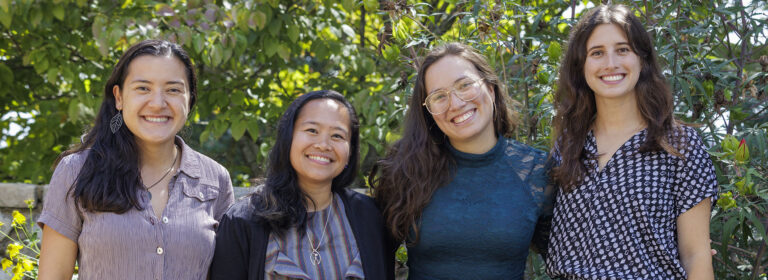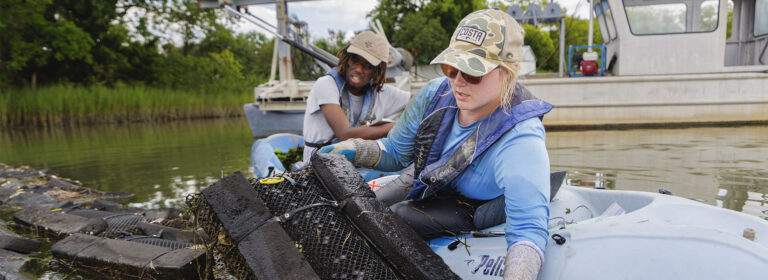Trends, technology shared at Virginia Aquaculture Conference
From the time it takes to grow raise two handfuls of oyster seed into market-sized oysters ready to be served on the half shell, an oyster grower will handle hundreds of thousands of pounds of sharp oyster shells.
The Virginia Aquaculture Conference featured resources for these growers, new technologies and gear at the trade show, and highlights from research relevant to the industry. The conference, held Jan. 7-8 in Newport News, featured resources, updates, and networking opportunities for about 140 attendees. The event is organized by the Virginia Institute of Marine Science Marine Advisory Program.
“It was great to see the young, smaller-scale growers turning up at this event,” said Karen Hudson, the event organizer and shellfish extension specialist with VIMS MAP. “They took full advantage of the networking — making connections and soaking up the nature of the science to support industry sustainability. These folks are innovating and reminding us that we have room to grow.”
During the first day of the conference, presenters gave an overview of growth trends in the industry and pointers for managing businesses during uncertainty. Speakers also gave an overview of grant opportunities from the Virginia Department of Agriculture and Consumer Services, and different programs from the U.S. Department of Agriculture that aquaculture growers can apply for, such as the Noninsured Crop Disaster Assistance Program (NAP) and Emergency Assistance for Livestock, Honeybees, and Farm-Raised Fish Program (ELAP).
During the keynote address, National Aquaculture Association Executive Director Paul Zajicek shared how grassroots advocacy can raise national awareness for aquaculture.
Are pandemic seafood trends here to stay?
A national consumer survey is investigating how consumer trends in seafood purchases changed during the pandemic and will shed light on whether these trends may continue after the pandemic or revert back to pre-COVID trends — and why. Preliminary results shared at the conference focused on trout, but the survey also includes questions focused on oysters and catfish species relevant to Virginia aquaculture.
The trends identified so far are generally consistent across types of aquaculture seafood, according to Jonathan van Senten, an Assistant Professor and Aquaculture Economics expert at the Virginia Tech Seafood AREC (VSAREC), who is a lead on the project.
“One interesting thing is that price has always been so important with seafood, but we’re starting to see more and more that price is not always ending up in the top three most important attributes,” van Senten said.
While price remains in the top 5-10 factors people consider, other factors like convenience are becoming higher priorities for seafood consumers, van Senten added. The survey collects information about how frequently people buy seafood, what species they buy, how much they spend, and whether they prepare seafood at home or purchase it at restaurants. For example, during the pandemic, people ate more trout at lunch, and less trout at dinnertime, compared to their habits before the pandemic.
The survey began quarterly in 2021 to track trends in seafood consumption as the industry recovered from impacts of the pandemic, and will be administered every six months through the end of 2022. Each of survey includes 2,000 respondents from 20 areas in the U.S. that are important for aquaculture products.
“One interesting thing is that price has always been so important with seafood, but we're starting to see more and more that price is not always ending up in the top three most important attributes."
-Jonathan van Senten
Research updates for aquaculture
Other highlights from the conference included new aquaculture technologies, such as a system that reuses water for oyster hatcheries rather than filter water from a nearby water source like a river or the Bay. This recirculating system will allow hatcheries to protect the young oysters they sell, which are more vulnerable to sickness or death from poor water quality.
The system, developed by VSAREC and VIMS researchers, is currently in testing at Oyster Seed Holdings. So far, the recirculating system has provided comparable survival rates for oyster larvae without the dips in water quality from ambient Bay water, according to Mike Congrove, owner of Oyster Seed Holdings.
New technologies presented at the Virginia Aquaculture Conference may also improve finfish aquaculture. Researchers at the Virginia Tech Seafood AREC are testing new ingredients for fish food, one of the most expensive parts of a fish aquaculture operations. Potential protein sources include black soldier fly larvae and sorghum, a versatile grain crop poised to become a sustainable staple in animal feeds.
As a non-GMO ancient grain with low environmental impact, sorghum is a prime candidate for use in fish and other animal feeds. Black soldier fly larvae are known for their ability to eat almost any organic matter and convert it into useable protein for fishmeal in aquaculture.
Other presentations included updates from the VIMS Shellfish Aquaculture Science Initiative, and updates about a Virginia survey that will provide an updated estimate of the total economic value of Virginia’s seafood industry.
Takeaways:
- The Virginia Aquaculture Conference included resources, new technology, networking opportunities, and research updates relevant for aquaculture.
- Resources included the tradeshow, an overview of USDA program eligibility for aquaculture, association meetings, and general industry trends.
- Research updates included a recirculating system for oyster hatcheries, new protein sources for finfish feeds, and graduate student research.
- The next Virginia Aquaculture Conference will be held in 2023.
Photos and video by Aileen Devlin | Virginia Sea Grant
Story by Madeleine Jepsen | Virginia Sea Grant
Published Jan. 13, 2021.
View more conference photos at our Flickr album.
Scroll over the boxes below for rapid-fire research updates:
Do Hard Clams Genes Help Them Tolerate Low Salinity?
Do hard clams genes help them tolerate low salinity?
Does Cross-Breeding Hard Clam Populations Alter Larval Environmental Stress Tolerance?
Does Cross-Breeding Hard Clam Populations Alter Larval Environmental Stress Tolerance?
Uncovering the Genetic Diversity of Dermo Disease to Strengthen Regional Shellfish Health Management
Uncovering the Genetic Diversity of Dermo Disease to Strengthen Regional Shellfish Health Management
Improving Virginia’s Ability to Monitor for Toxins from Harmful Algal Blooms
Improving Virginia’s Ability to Monitor for Toxins from Harmful Algal Blooms
Are Aquaculture Oyster Larvae More Resilient to Climate Change than Wild Oyster Larvae?
Are aquaculture oyster larvae more resilient to climate change than wild oyster larvae?
How Growers Can Contribute to the Science of Assessing Bay Shellfish Vulnerability to Environmental Stressors
How Growers Can Contribute to the Science of Assessing Bay Shellfish Vulnerability to Environmental Stressors
So far, the recirculating system has provided comparable survival rates for oyster larvae without the dips in water quality from ambient Bay water, according to Mike Congrove, owner of Oyster Seed Holdings.





